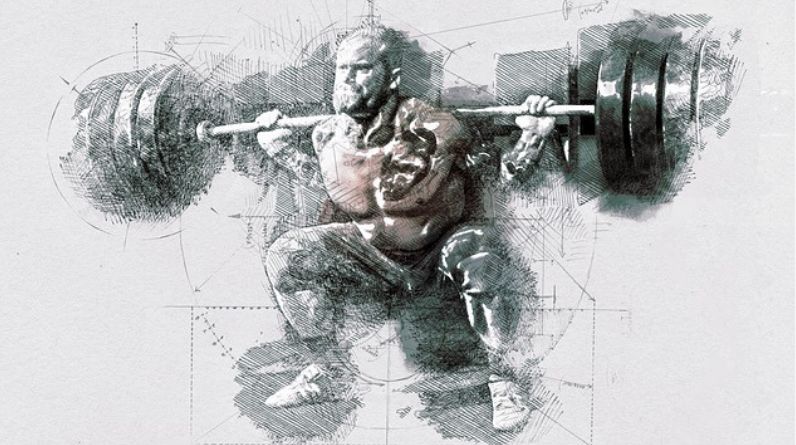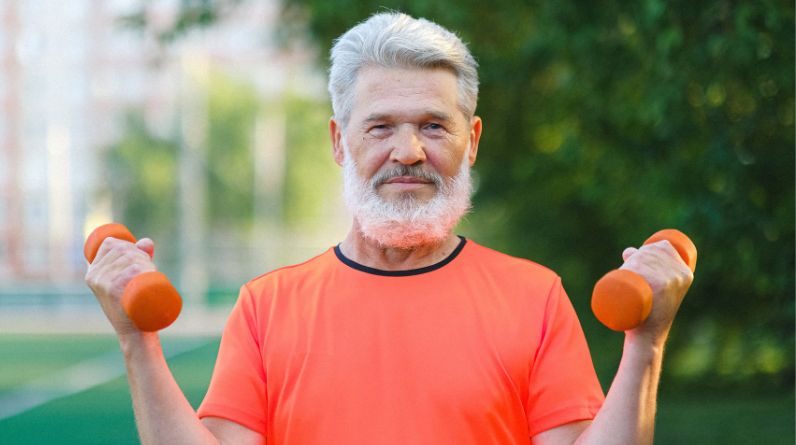
1. Introduction
The journey of muscle growth transformation is a remarkable process that allows individuals to unlock their body’s full potential. It involves the intentional and systematic development of muscle mass through various training methods, nutrition, and lifestyle choices. Whether you are a beginner looking to build a strong foundation or an experienced lifter seeking to take your physique to the next level, understanding the principles and strategies for muscle growth transformation is essential. This article will explore the key components of muscle growth, training techniques, nutrition, recovery, and the mindset required for a successful transformation.
2. Understanding Muscle Growth
The process of making muscle fibers larger is referred to as hypertrophy or muscular growth. There are two primary types of muscle hypertrophy: myofibrillar and sarcoplasmic hypertrophy. Myofibrillar hypertrophy involves an increase in the contractile proteins within the muscle fibers, leading to greater strength. Sarcoplasmic hypertrophy, on the other hand, involves an increase in the non-contractile fluid and energy stores within the muscle, resulting in a fuller appearance. Both types of hypertrophy can occur simultaneously and contribute to overall muscle growth.
3. Resistance Training for Muscle Growth
Resistance training, also known as weight or strength training, is the foundation of muscle growth transformation. It involves subjecting muscles to external resistance to stimulate muscle fiber damage and repair, leading to growth. Progressive overload, as discussed earlier, is a fundamental principle in resistance training, and it involves gradually increasing the demands placed on muscles over time to promote continuous growth.
4. Nutrition for Muscle Growth
Proper nutrition is a crucial aspect of muscle growth transformation. Consuming sufficient calories and macronutrients, especially protein, is essential for muscle repair and growth. Protein provides the necessary amino acids, which are the building blocks for muscle tissue. Additionally, carbohydrates and fats supply the energy needed for intense workouts and overall body functions. Adequate hydration is also vital for optimal performance and recovery.
5. Recovery and Rest
Muscle growth occurs during periods of rest and recovery, not during workouts. Scheduling adequate rest days and ensuring quality sleep are essential for allowing the body to repair and rebuild muscle tissue. During rest, the body releases growth hormones, testosterone, and other anabolic hormones that support muscle growth. Ignoring recovery can lead to overtraining, fatigue, and hindered progress.
6. Mindset and Discipline
Achieving a muscle growth transformation requires a strong mindset and discipline. Consistency in training, nutrition, and recovery is key to progress. Staying committed to your goals, even in the face of challenges, setbacks, and plateaus, is crucial for long-term success. Cultivating a positive and determined attitude can keep you motivated and focused on your journey.
7. Training Techniques for Muscle Growth
There are various training techniques that can enhance muscle growth:
7.1 Compound Movements
Compound movements are foundational exercises that involve multiple muscle groups working together. These movements are highly effective for muscle growth as they recruit a large number of muscle fibers and stimulate the release of anabolic hormones like testosterone and growth hormone. Examples of compound movements include squats, deadlifts, bench presses, overhead presses, and rows.
Benefits:
- Efficient use of time in the gym, as they target multiple muscles in one exercise.
- Greater overall strength development due to the involvement of multiple muscle groups.
- Enhance functional strength, which translates to better performance in daily activities and sports.
7.2 Isolation Exercises
Isolation exercises target a specific muscle group, allowing you to focus on muscle contraction and development in that particular area. These exercises are useful for targeting lagging or underdeveloped muscles and creating balanced muscle development. Bicep curls, tricep extensions, leg curls, and lateral raises are a few illustrations of isolation workouts.
Benefits:
- Helps improve muscle symmetry and aesthetics by targeting specific muscle groups.
- Allows for more concentrated muscle work, leading to better muscle isolation and control.
- Assists in correcting muscle imbalances and weaknesses.
7.3 Drop Sets
Drop sets, also known as strip sets, are a training technique that involves performing a set of an exercise to failure, then immediately reducing the weight and continuing with additional repetitions. This technique pushes the muscles to fatigue, leading to increased metabolic stress and muscle fiber recruitment.
Benefits:
- Creates significant muscle fatigue, which can trigger greater muscle protein synthesis and growth.
- Maximizes time under tension, stimulating hypertrophy and muscle adaptation.
- Provides a challenging and intense training stimulus to break through plateaus.
7.4 Supersets
Supersets involve performing two exercises back-to-back without rest. They can be organized to target the same muscle group (same muscle superset) or different muscle groups (opposing muscle superset). Supersets increase workout intensity and time under tension, promoting muscle growth.
Benefits:
- Efficient way to increase workout density and save time in the gym.
- Elevates the heart rate, leading to a greater metabolic response.
- Allows for more volume and variety in training sessions.
7.5 Pyramid Sets
Pyramid sets involve gradually increasing or decreasing the weight in successive sets. In an ascending pyramid, the weight is increased with each set, while in a descending pyramid, the weight is reduced. Pyramid sets challenge muscles differently throughout the workout.
Benefits:
- Provides a varied training stimulus, promoting muscle adaptation and growth.
- Can be used to work up to heavy loads or focus on high repetitions for muscle endurance.
- Enhances muscular fatigue and engagement from different angles and resistances.
7.6 Time Under Tension (TUT)
Time under tension refers to the duration that muscles are working during an exercise set. Slowing down the eccentric (lowering) phase of an exercise increases TUT, which can enhance muscle growth. Controlled and deliberate movements during both the eccentric and concentric phases are essential for maximizing TUT.
Benefits:
- Increases mechanical tension on the muscle, a key driver of muscle hypertrophy.
- Amplifies muscle damage, leading to greater repair and growth.
- Promotes better mind-muscle connection and muscle fiber recruitment.
Incorporating a variety of training techniques into your workout routine can provide a well-rounded approach to muscle growth. Periodically changing the training methods can prevent plateaus and keep the body adapting, leading to continuous progress and transformation. However, it’s crucial to balance intensity with recovery to avoid overtraining and promote optimal muscle development. Consult with a fitness professional to tailor these techniques to your specific goals and fitness level.
8. Muscle Growth Transformation: From Beginner to Advanced
The approach to muscle growth transformation can vary depending on your training experience:
8.1 Beginners
For beginners, building a solid foundation is essential to set the stage for muscle growth transformation. Focus on full-body workouts that target major muscle groups, incorporating compound movements and bodyweight exercises. Compound movements, such as squats, deadlifts, bench presses, rows, and overhead presses, engage multiple muscle groups simultaneously, providing a comprehensive workout.
Key Points:
- Start with low to moderate resistance to learn proper form and technique.
- Increase the weight and intensity gradually as you get more accustomed to the workouts.
- Focus on mastering bodyweight exercises before moving on to weighted movements.
- Prioritize full-body workouts to stimulate overall muscle development and functional strength.
8.2 Intermediate:
As you progress to the intermediate level, you can begin to incorporate more advanced training techniques to target specific muscle groups and enhance muscle growth further. Split routines, where you focus on specific muscle groups on different days, can be effective for providing greater volume and intensity to each muscle group.
Key Points:
- Implement a split routine to allocate more time and effort to individual muscle groups.
- Use isolation exercises to target specific muscles and create balanced muscle development.
- Experiment with advanced training techniques like drop sets, supersets, and pyramid sets to challenge muscles and introduce variety.
- Consider incorporating periodization, where you vary the training parameters (sets, reps, intensity) over time to avoid plateaus and optimize muscle growth.
8.3 Advanced:
At the advanced level, your muscle growth transformation may require more complex training protocols to continue making progress. Periodization, in which you systematically vary training variables, is especially beneficial for advanced lifters. This approach includes different phases, such as hypertrophy, strength, and power, to target various aspects of muscle development.
Key Points:
- Employ periodization to keep muscles adapting and growing continuously.
- Consider implementing specialization routines to target specific muscle groups that need more development.
- Focus on maximizing time under tension and controlling eccentric movements for optimal muscle stimulation.
- Prioritize recovery and rest to avoid overtraining and reduce the risk of injuries.
- Regardless of your training level, nutrition is crucial for muscle growth transformation. Make sure you get enough protein to assist muscle growth and repair. Maintain a balanced diet with a variety of nutrients to support overall health and energy levels for intense workouts.
9. Conclusion
Muscle growth transformation is a journey of dedication, perseverance, and discipline, where individuals unleash their full potential to achieve significant changes in their physique and strength. It goes beyond regular muscle growth, encompassing a holistic approach that includes structured training, proper nutrition, adequate rest, and a positive mindset. Through progressive overload, individuals challenge their muscles, leading to hypertrophy and enhanced performance.
Muscle growth transformation is not limited by age or gender, and individuals of all backgrounds can achieve remarkable results with the right strategies and consistency. It requires setting realistic goals, tracking progress, and making gradual adjustments to training and nutrition to continuously stimulate muscle growth and prevent plateaus.
While genetics may play a role, hard work and determination can overcome inherent limitations, allowing individuals to reach their desired level of muscle development. Women can participate in muscle growth transformation without fear of excessive bulkiness, achieving a strong and toned physique.
It is crucial to remember that muscle growth transformation is a process that takes time and commitment. Results may not be immediate, but with patience and persistence, the rewards will become evident. Proper recovery, including adequate sleep and rest, is just as important as training and nutrition, as it allows muscles to repair and grow.
Ultimately, muscle growth transformation is not just about physical changes; it is a journey of self-discovery, confidence building, and realizing one’s true potential. By embracing the principles of progressive overload, adopting healthy habits, and staying focused on the end goal, individuals can unleash their full potential and experience a profound transformation in both body and mind. The key is to believe in oneself, stay consistent, and trust in the process – the results will be nothing short of astounding. So, take that first step, commit to the process, and embark on the path of muscle growth transformation to unleash your full potential and become the best version of yourself.
Frequently Asked Questions:
1. What is muscle growth transformation, and how does it differ from regular muscle growth?
Muscle growth transformation refers to a deliberate and comprehensive approach to building significant muscle mass and strength through structured training, nutrition, and lifestyle changes. It differs from regular muscle growth in that it involves a more focused and intentional effort to achieve significant changes in physique and strength, rather than simply maintaining or modestly increasing muscle size over time.
2. How long does it take to see noticeable results in a muscle growth transformation?
The timeline for noticeable results in a muscle growth transformation can vary widely depending on individual factors. Generally, some visible changes may be noticed within a few weeks to a couple of months of consistent and dedicated efforts. However, substantial transformation and significant muscle growth typically require several months to a year or more of committed training and nutrition.
3. Can women undergo muscle growth transformation without getting bulky?
Yes, women can undergo muscle growth transformation without becoming overly bulky. Women have lower levels of testosterone, which is a hormone that contributes to significant muscle mass. Muscle growth in women tends to be more subtle, resulting in a lean and toned physique rather than a bulky appearance. Resistance training can help women achieve a strong and defined physique without excessive muscle size.
4. Is muscle growth transformation only for young individuals?
No, muscle growth transformation is not limited to young individuals. People of all ages can undergo muscle growth and experience significant changes in strength and muscle mass with proper training, nutrition, and recovery. Age does not prevent muscle growth, and older individuals can still achieve remarkable transformations with the right approach.
5. Can muscle growth transformation be achieved without supplements?
Yes, muscle growth transformation can be achieved without supplements. While supplements can be helpful in supporting nutrition and recovery, they are not necessary for muscle growth. A well-balanced diet that provides sufficient protein and calories, along with proper training, is sufficient for muscle development.
6. How important is the role of genetics in muscle growth transformation?
Genetics do play a role in muscle growth and an individual’s response to training and nutrition. Some individuals might naturally bulk up more quickly than others. However, with dedication, proper training, and nutrition, most individuals can achieve significant muscle growth and transformation regardless of their genetic predisposition.
7. How often should I change my workout routine during a muscle growth transformation?
Changing your workout routine periodically is beneficial to prevent plateaus and keep muscles challenged. Aim to modify exercises, sets, reps, or training techniques every 4-8 weeks to introduce new stimuli and ensure continuous progress.
8. Can I undergo muscle growth transformation with bodyweight exercises only?
Yes, muscle growth transformation is possible with bodyweight exercises alone, especially for beginners. Bodyweight exercises can be effective for building strength and muscle when performed with progressive overload and proper form. However, as individuals progress, incorporating external resistance, such as free weights or resistance bands, can further stimulate muscle growth.
9. Is muscle growth transformation achievable for individuals with certain health conditions or injuries?
Muscle growth transformation can be adapted to accommodate various health conditions and injuries. However, it is essential to consult with a healthcare professional or qualified fitness trainer to design a safe and suitable training program. Special considerations may be needed to ensure that exercises and training protocols are appropriate for individual needs and limitations.
10. Can muscle growth transformation be maintained in the long term?
Yes, muscle growth transformation can be maintained in the long term with consistent training, nutrition, and lifestyle habits. It’s essential to adopt sustainable practices and avoid drastic changes that are difficult to maintain over time. Continuously challenging the muscles with progressive overload, adhering to a balanced and nutrient-rich diet, and allowing sufficient time for recovery are key factors in maintaining muscle growth and overall fitness in the long run.






1 Comment
Comments are closed.